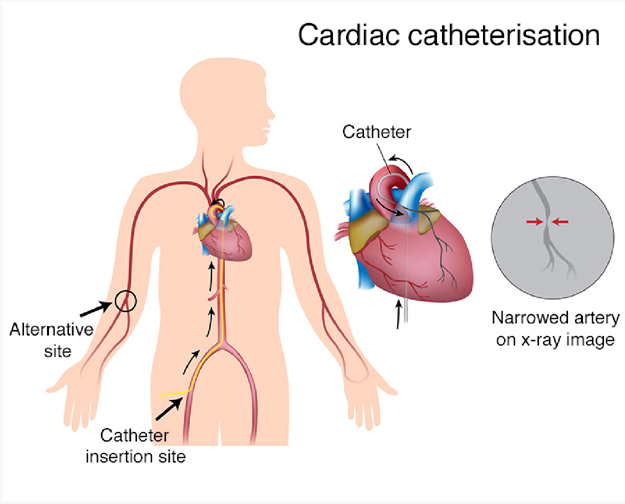The nurse is discussing discharge teaching with the client who is three (3) days post-operative abdominal aortic aneurysm repair. Which information should the nurse include in the teaching?
Notify HCP of any redness or irritation of incision.
Do not lift anything more than 20 pounds.
Inform client that there may be pain not relieved with pain medication.
Stress the importance of having daily bowel movements.
Correct Answer : A,B,C,D
The information that the nurse should include in the discharge teaching for the client who is three days post-operative abdominal aortic aneurysm repair is as follows:
Notify the healthcare provider (HCP) of any redness or irritation of the incision: This is important because redness or irritation can be signs of infection or other complications at the surgical site. Prompt reporting allows for early intervention and management.
Do not lift anything more than 20 pounds: Following abdominal aortic aneurysm repair, it is crucial to avoid heavy lifting or straining as it can put excessive pressure on the surgical site and potentially lead to complications such as incisional hernia. Restricting lifting to no more than 20 pounds helps to protect the incision and promote proper healing.
Inform the client that there may be pain not relieved with pain medication: Pain management is an essential aspect of post-operative care. However, it is important for the client to understand that complete relief of pain may not always be achievable with pain medication alone. They should be aware that mild to moderate discomfort may persist during the healing process, but severe or worsening pain should be reported to the healthcare provider.
Stress the importance of having daily bowel movements: After abdominal surgery, it is common for bowel movements to be delayed due to factors such as anesthesia, reduced activity, and pain medication. However, it is crucial for the client to maintain regular bowel movements to prevent constipation and potential complications such as bowel obstruction. The nurse should provide guidance on strategies to promote regular bowel function, such as staying hydrated, eating a balanced diet rich in fiber, and using stool softeners or gentle laxatives as directed by the healthcare provider.
Nursing Test Bank
Naxlex Comprehensive Predictor Exams
Related Questions
Correct Answer is A
Explanation
ST-segment elevation during exercise stress testing is a concerning finding that may indicate reduced blood flow to the heart muscle. It can be a sign of myocardial ischemia or coronary artery disease. Cardiac catheterization is a diagnostic procedure that allows direct visualization of the coronary arteries and helps identify any blockages or narrowing that may be causing the ST-segment elevation.

Here's an explanation of why the other options are not the most appropriate procedures:
Transesophageal echocardiogram: Transesophageal echocardiogram (TEE) is a diagnostic test that involves inserting a probe into the esophagus to obtain detailed images of the heart. It is not typically used to evaluate ST-segment elevation, which primarily indicates coronary artery issues rather than structural abnormalities.
Telemetry monitoring: Telemetry monitoring involves continuous monitoring of a patient's heart rhythm and can be used for various cardiac conditions. While telemetry monitoring may be necessary for ongoing cardiac assessment, it is not a specific procedure to address the ST-segment elevation found during the exercise stress test.
Pharmacologic stress test: A pharmacologic stress test is an alternative to an exercise stress test for patients who cannot exercise. It involves administering medications that stimulate the heart to mimic the effects of exercise. While a pharmacologic stress testcan also reveal ST-segment changes, the presence of ST-segment elevation usually requires further evaluation with a more invasive procedure like cardiac catheterization.
Correct Answer is D
Explanation
While it is generally recommended to avoid close or prolonged exposure to strong magnetic fields, such as those generated by MRI machines, placing items that generate magnetic fields over the pacemaker/ICD, such as cell phones or certain medical devices, does not typically pose a risk. Therefore, it would be important for the nurse to clarify the client's understanding and provide accurate information about the precautions related to magnetic fields.
The other statements made by the client are generally correct and align with the typical recommendations for individuals with pacemakers/ICDs:
Avoiding contact sports or lifting heavy objects for a specified period of time after pacemaker/ICD insertion is usually advised to allow for proper healing and to reduce the risk of lead dislodgment or damage to the device.
Informing dentists and healthcare providers about the presence of a pacemaker/ICD is important so that they can take appropriate precautions during procedures or treatments that may involve electromagnetic interference or interfere with the device's functioning.
While it is generally advised to avoid close proximity to strong magnetic fields, such as those in airports or certain household appliances, it does not necessarily mean completely avoiding them. The nurse can clarify the specific recommendations regarding metal detectors at airports and the safe use of household appliances.
Whether you are a student looking to ace your exams or a practicing nurse seeking to enhance your expertise , our nursing education contents will empower you with the confidence and competence to make a difference in the lives of patients and become a respected leader in the healthcare field.
Visit Naxlex, invest in your future and unlock endless possibilities with our unparalleled nursing education contents today
Report Wrong Answer on the Current Question
Do you disagree with the answer? If yes, what is your expected answer? Explain.
Kindly be descriptive with the issue you are facing.
